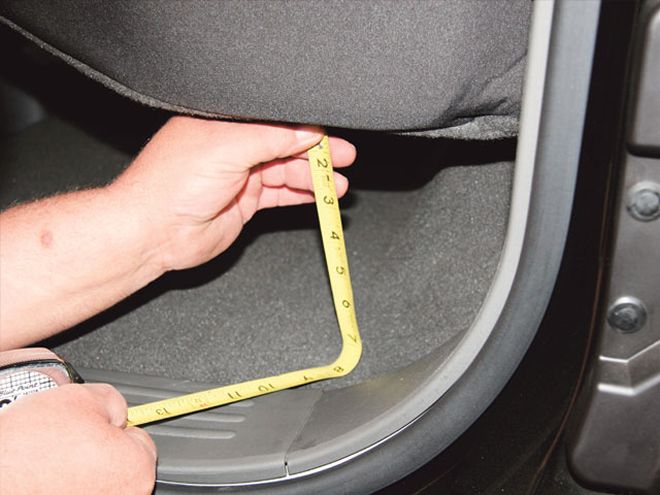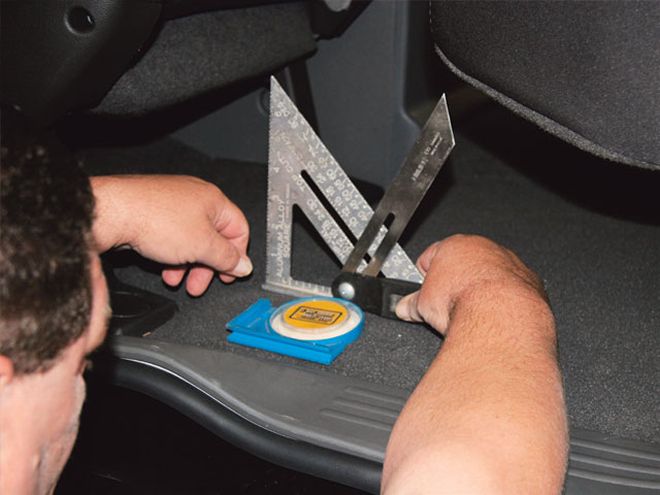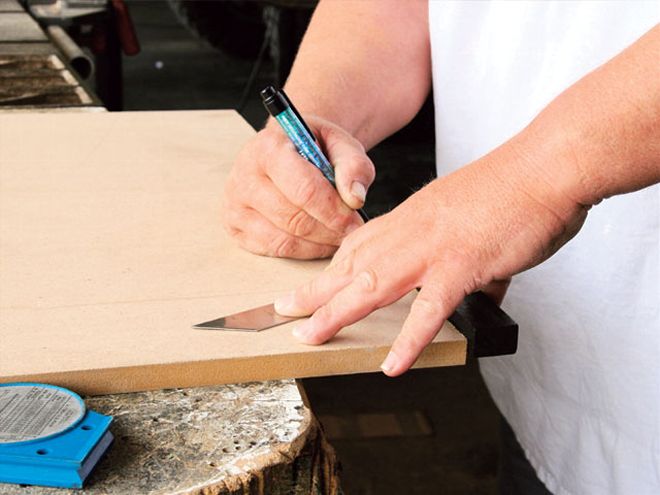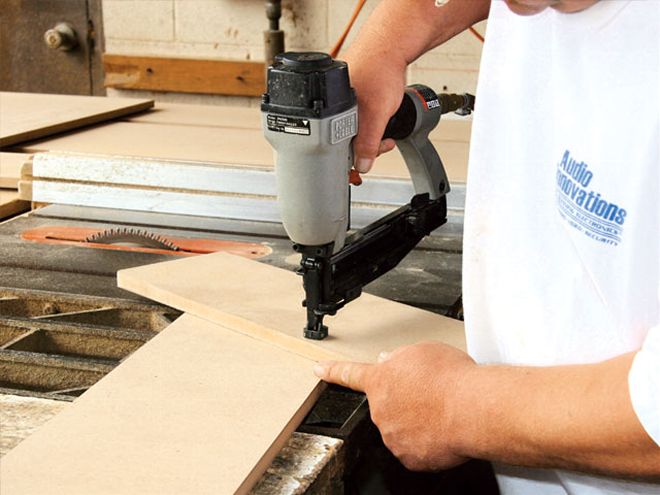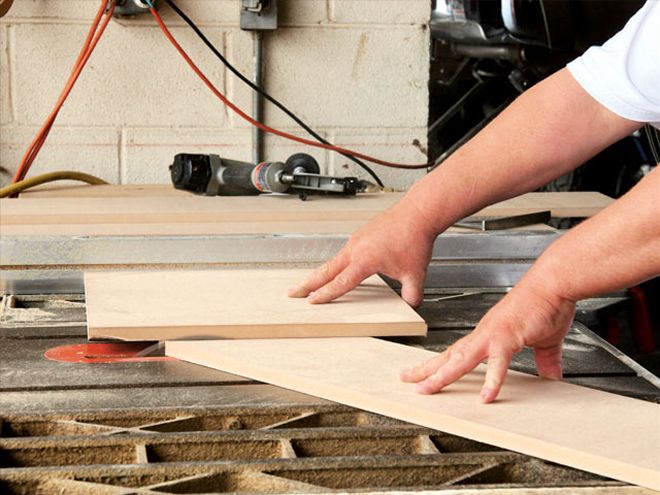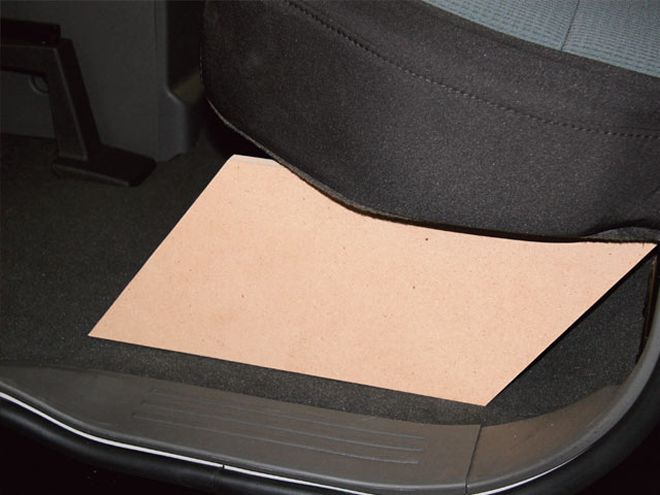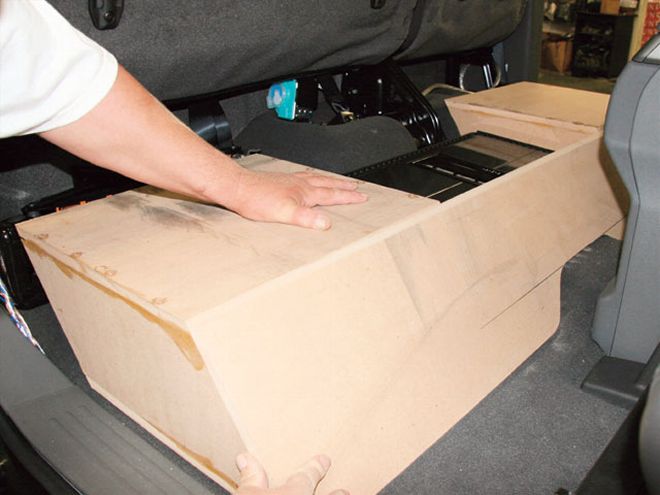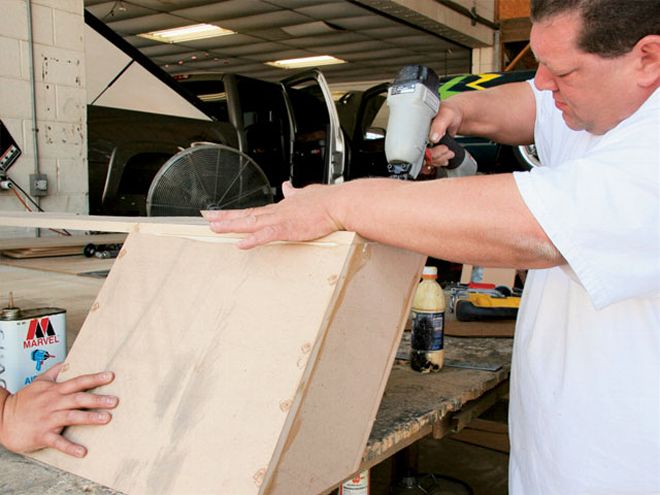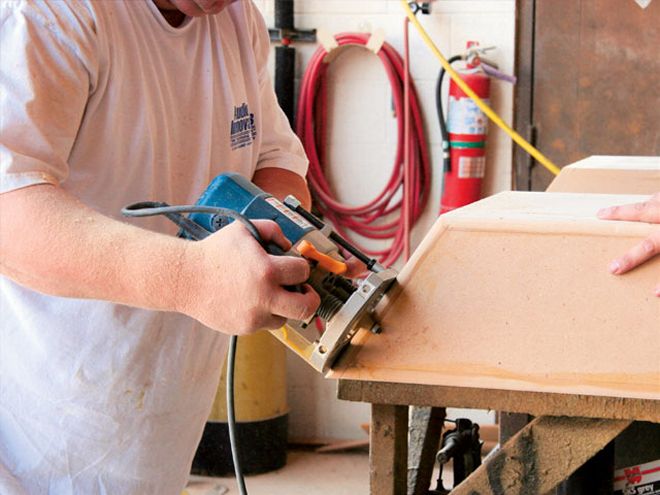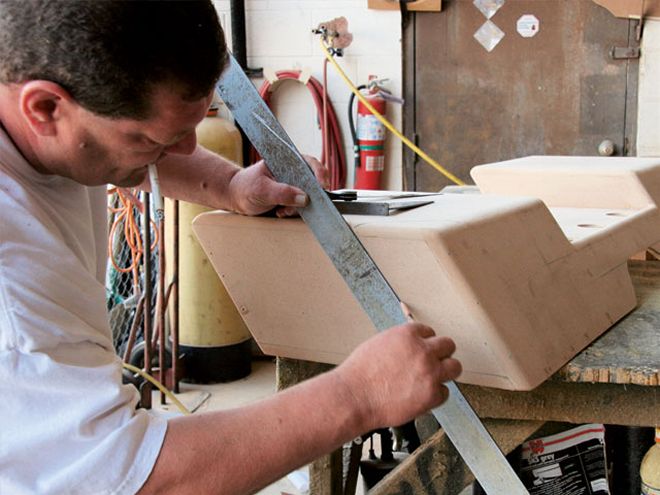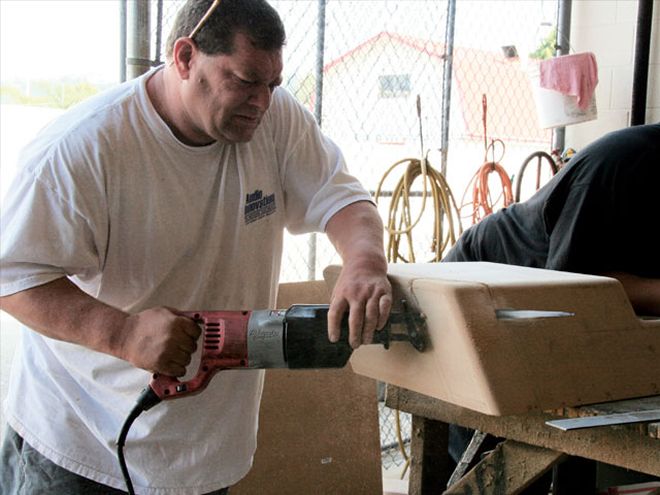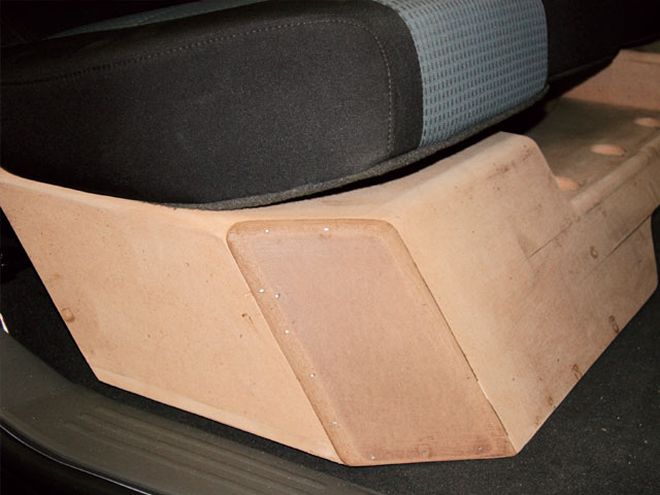Building a Subwoofer Box - Box-Building Basics
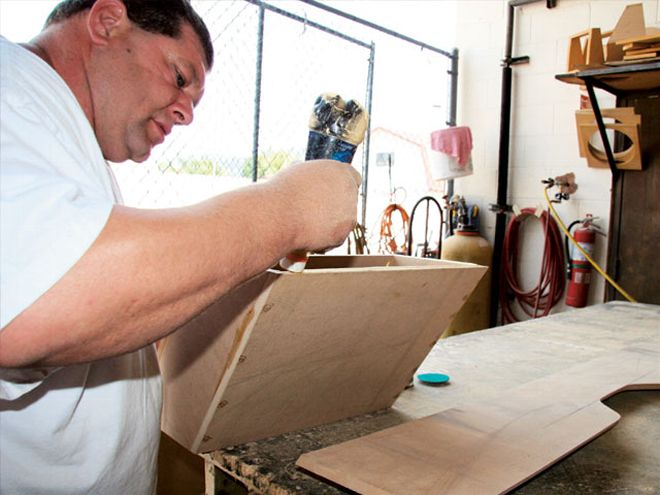
| subwoofer Enclosure box Fabrication
When it comes to designing a stereo system that you can be proud of, the enclosure is equally as important as the woofer and amplifier and should be designed for use with the particular woofer. The type of music you listen to will determine every other parameter for the build of your box. For this build we went with Rockford Fosgate T1 10-inch subs because of the tight space parameters we had to work with. Initially, we were looking to go with 12's but our pro installer (Joe Provenzano from Audio Innovations) took his measurements and told us to trust that he'll make the 10's sound better than 12's (due to our limited space). We put our faith in Joe and away we went.
Deciding which enclosure and woofer is best can be a huge task all its own, but understanding the size constraints of the vehicle, the Thiele/Small parameters, and the inherent sound characteristics of different enclosure designs, teamed with help from the professionals, will make the difference between average and phenomenal!
All enclosures should be constructed of at least 5/8-inch MDF (medium-density fiberboard) or material of comparable rigidity or better. Bracing should be used throughout the enclosure as needed to prevent any loss of energy due to flexing. Obvious materials include wood glue and/or silicon, and wood screws or nails. Now all we need to do is get some measurements to determine our box size. The number of equations and calculations that box builders and installers use could fill up this entire magazine, so we'll just stick with the basics.
For our sub choice the minimum air space required is .75 cubic feet, so even with limited space Joe had us dead-on for air space parameters, which will give us the total sound we're after. Follow along to see just how to build a one-off box for any area you can stick it. For more information, contact the companies listed in the source box.
Box-Building Equations To determine the box size for a sealed enclosure system (which is what we are building) you'll need to know the following Theile/Small parameters for the driver:
Vas = Equivalent air compliance (for the T1 Rockford) = .67 cubic feet
Qts = Total Q of the driver at Fs (frequency response) = .574 cubic feet
Fs = Resonance frequency of the driver (Hz) = 32 Hz
Choose a final Qtc (total Q of system at resonant frequency) for your design. Recommended values for Qtc are from 0.6 to 1.0. Transient response degrades with higher Qtc values, but the power handling of the system increases. A Qtc of 0.75 will usually give pretty good, even results but you can use a higher figure if the subwoofer has a low resonant frequency (under 20 Hz).
The volume of air space equation to figure out the total air space for a box is
H (height) x W (width) x D (depth). Our space used is 6.25x13.25x16.75/1,728 = .8 cubic feet.
 | subwoofer Enclosure box Fabrication
When it comes to designing a stereo system that you can be proud of, the enclosure is equally as important as the woofer and amplifier and should be designed for use with the particular woofer. The type of music you listen to will determine every other parameter for the build of your box. For this build we went with Rockford Fosgate T1 10-inch subs because of the tight space parameters we had to work with. Initially, we were looking to go with 12's but our pro installer (Joe Provenzano from Audio Innovations) took his measurements and told us to trust that he'll make the 10's sound better than 12's (due to our limited space). We put our faith in Joe and away we went.
Deciding which enclosure and woofer is best can be a huge task all its own, but understanding the size constraints of the vehicle, the Thiele/Small parameters, and the inherent sound characteristics of different enclosure designs, teamed with help from the professionals, will make the difference between average and phenomenal!
All enclosures should be constructed of at least 5/8-inch MDF (medium-density fiberboard) or material of comparable rigidity or better. Bracing should be used throughout the enclosure as needed to prevent any loss of energy due to flexing. Obvious materials include wood glue and/or silicon, and wood screws or nails. Now all we need to do is get some measurements to determine our box size. The number of equations and calculations that box builders and installers use could fill up this entire magazine, so we'll just stick with the basics.
For our sub choice the minimum air space required is .75 cubic feet, so even with limited space Joe had us dead-on for air space parameters, which will give us the total sound we're after. Follow along to see just how to build a one-off box for any area you can stick it. For more information, contact the companies listed in the source box.
Box-Building Equations
| subwoofer Enclosure box Fabrication
When it comes to designing a stereo system that you can be proud of, the enclosure is equally as important as the woofer and amplifier and should be designed for use with the particular woofer. The type of music you listen to will determine every other parameter for the build of your box. For this build we went with Rockford Fosgate T1 10-inch subs because of the tight space parameters we had to work with. Initially, we were looking to go with 12's but our pro installer (Joe Provenzano from Audio Innovations) took his measurements and told us to trust that he'll make the 10's sound better than 12's (due to our limited space). We put our faith in Joe and away we went.
Deciding which enclosure and woofer is best can be a huge task all its own, but understanding the size constraints of the vehicle, the Thiele/Small parameters, and the inherent sound characteristics of different enclosure designs, teamed with help from the professionals, will make the difference between average and phenomenal!
All enclosures should be constructed of at least 5/8-inch MDF (medium-density fiberboard) or material of comparable rigidity or better. Bracing should be used throughout the enclosure as needed to prevent any loss of energy due to flexing. Obvious materials include wood glue and/or silicon, and wood screws or nails. Now all we need to do is get some measurements to determine our box size. The number of equations and calculations that box builders and installers use could fill up this entire magazine, so we'll just stick with the basics.
For our sub choice the minimum air space required is .75 cubic feet, so even with limited space Joe had us dead-on for air space parameters, which will give us the total sound we're after. Follow along to see just how to build a one-off box for any area you can stick it. For more information, contact the companies listed in the source box.
Box-Building Equations 